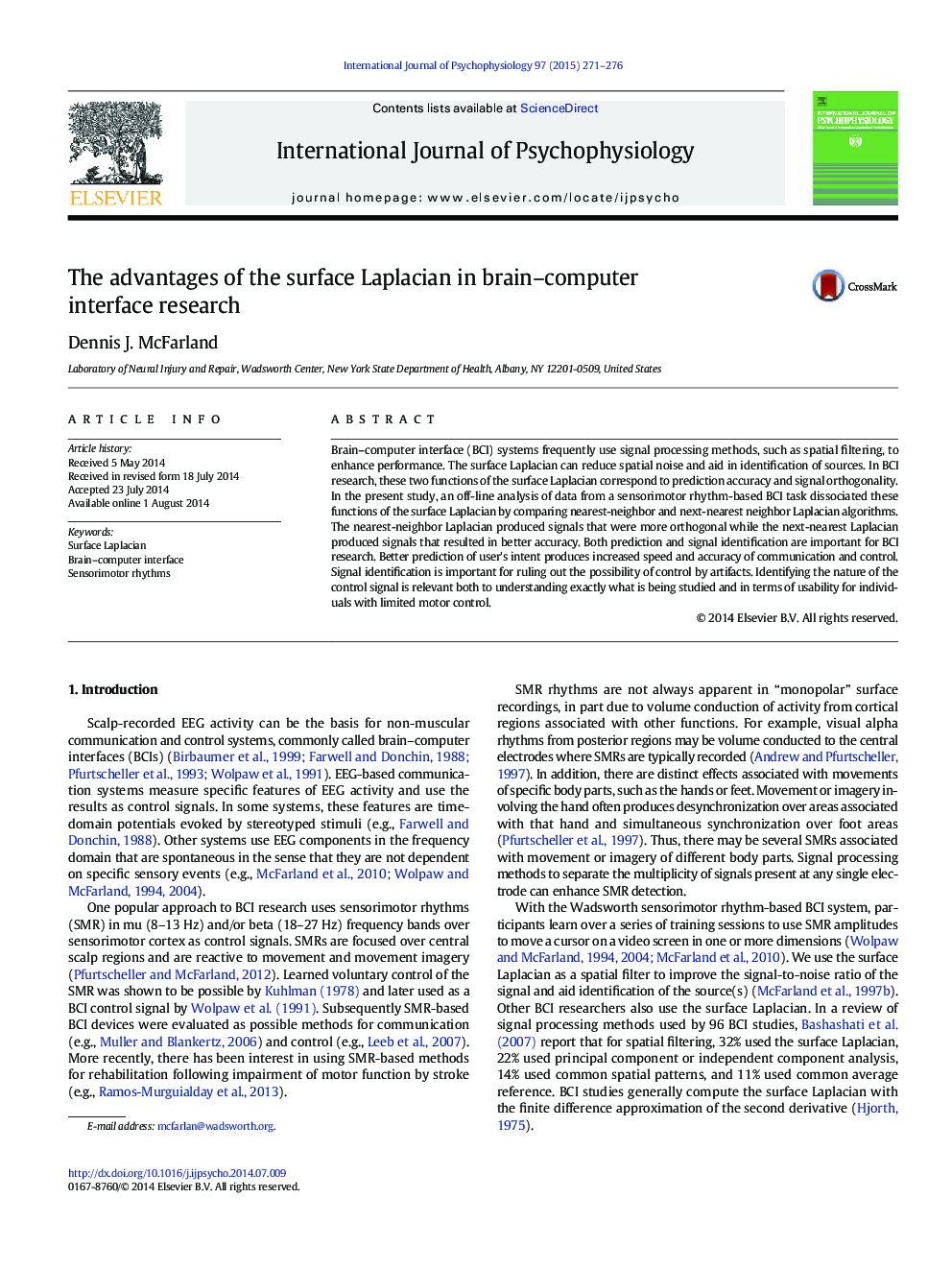| کد مقاله | کد نشریه | سال انتشار | مقاله انگلیسی | نسخه تمام متن |
|---|---|---|---|---|
| 7295345 | 1474403 | 2015 | 6 صفحه PDF | دانلود رایگان |
عنوان انگلیسی مقاله ISI
The advantages of the surface Laplacian in brain-computer interface research
دانلود مقاله + سفارش ترجمه
دانلود مقاله ISI انگلیسی
رایگان برای ایرانیان
کلمات کلیدی
موضوعات مرتبط
علوم زیستی و بیوفناوری
علم عصب شناسی
علوم اعصاب رفتاری
پیش نمایش صفحه اول مقاله

چکیده انگلیسی
Brain-computer interface (BCI) systems frequently use signal processing methods, such as spatial filtering, to enhance performance. The surface Laplacian can reduce spatial noise and aid in identification of sources. In BCI research, these two functions of the surface Laplacian correspond to prediction accuracy and signal orthogonality. In the present study, an off-line analysis of data from a sensorimotor rhythm-based BCI task dissociated these functions of the surface Laplacian by comparing nearest-neighbor and next-nearest neighbor Laplacian algorithms. The nearest-neighbor Laplacian produced signals that were more orthogonal while the next-nearest Laplacian produced signals that resulted in better accuracy. Both prediction and signal identification are important for BCI research. Better prediction of user's intent produces increased speed and accuracy of communication and control. Signal identification is important for ruling out the possibility of control by artifacts. Identifying the nature of the control signal is relevant both to understanding exactly what is being studied and in terms of usability for individuals with limited motor control.
ناشر
Database: Elsevier - ScienceDirect (ساینس دایرکت)
Journal: International Journal of Psychophysiology - Volume 97, Issue 3, September 2015, Pages 271-276
Journal: International Journal of Psychophysiology - Volume 97, Issue 3, September 2015, Pages 271-276
نویسندگان
Dennis J. McFarland,